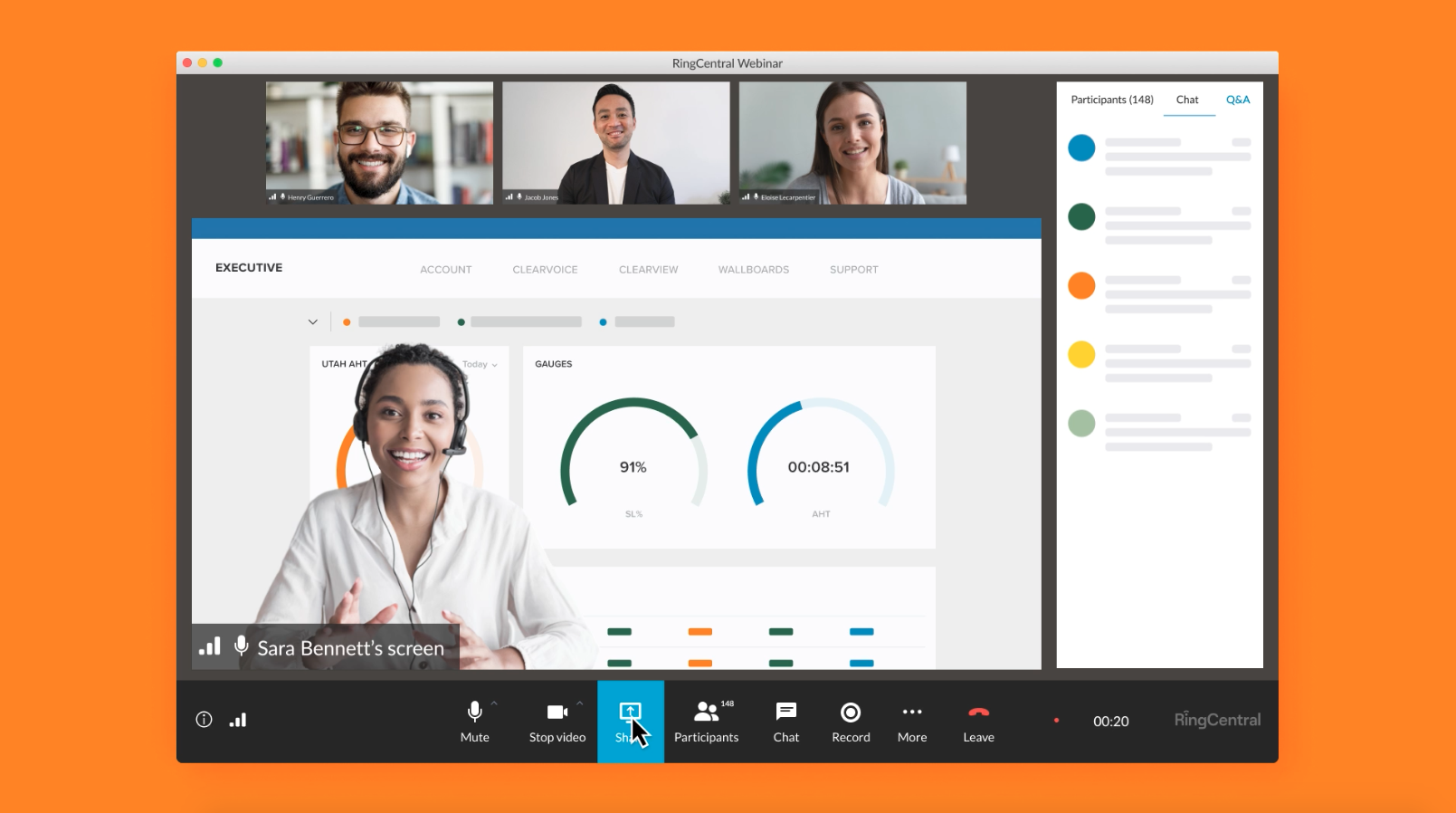The event you’ve been planning for months is weeks away, and things are starting to unravel. Your venue’s A/V tech claims they don’t have the teleprompters your keynote speaker requested, and your VIP registrants didn’t get their invite to the cocktail mixer –– you’re not quite sure who was responsible for that part of the experience.
Nevertheless, you remain confident in your ability to get everything back on track. But wouldn’t it be nice if all the moving pieces just fell into place for once?
Murphy’s Law states, “Anything that can go wrong will go wrong.” But the most seasoned event professionals have a valuable resource in their event toolkit that prevents their events from being compared to Fyre Fest — the event brief.
An event brief serves as a map, of sorts, charting the course for you and your team from point A to point B. Use our free template and follow the steps below to learn how to craft your own.
How to write an event brief step-by-step
Event briefs are documents that serve as a comprehensive, centralized overview of your event, detailing the core elements involved, key corresponding statuses and timelines, and the central internal and external resources needed to bring your event to life successfully.
So what better way to learn how to write an event brief than moving through all of its sections one-by-one? Below we’ll outline how to tackle each component of an event brief, beginning with its first step and section:
Step 1: Make it super easy to find the critical details of your event
The event brief overview is where all your highest visibility information is outlined. Think of it as your event brief’s prime real estate area.
Today’s event professionals know that creating unforgettable experiences requires managing and tackling a myriad of activities, tasks, and action items. It’s a high-stakes effort. Even the tiniest mistake or oversight can derail the best-planned event. Imagine if your keynote speaker accidentally books a flight for the week after the event takes place, or if your event website drives registrations for the incorrect date or time. Yikes!
Avoid these types of stressful mishaps by putting the most crucial information about your event at the very beginning of your brief. Begin your key information section by outlining critical details, like:
- Event title
- Event date(s)
- Event time(s)
- Event run time
- Event format (virtual, hybrid, or in-person)
- Event location (online and/or on-site location, as applicable)
- Event management platform (event technology, point of contact, and login instructions for the team, as appropriate)
- Event description (examples here for some inspiration)
- Event website/registration link
Step 2: Compile the vital resources for your team
When it comes to events, teamwork makes the dream work. That’s why it’s so important for you and your team to stay on the same page throughout the event planning journey. The main resources section of the event brief can help you stay aligned. Be sure to provide your team with all the shared documents, files, and folders core to planning and executing your event (and don’t forget to set the proper viewing and editing permissions for each). To get an idea of what to include in this section of your brief, check out some common examples:
- Event plan and project trackers
- Budget spreadsheet
- Run-of-show document
- Communications plan
- Creative assets folder
- Speaker notes and presentations
- Event landing page
- Registration reports
Listing (and linking to) these vital resources makes it easy for everyone involved to access, reference, and update documents from one centralized spot. Not to mention these materials go a long way in helping individuals play their parts and keeping the entire team on track. No one wants to miss the mark on key deliverables nor wind up feeling like they’ve failed their colleagues, because they weren’t in the loop.
Step 3: Articulate why your event needs to exist
Let’s explore an event’s purpose by asking a rhetorical question: Who would run an event for no reason — and why would anyone put their blood, sweat, and tears into bringing amazing attendee experiences to life without a goal in mind? This is where your event’s purpose comes into play. It represents your event’s North Star.
So, to document your event’s purpose in this section, begin by thinking about “the why” behind the experience: Why are you dedicating your time and energy to making it amazing? What is the underlying motivation for hosting your event? It often comes down to a strategic outcome you want to achieve, such as:
- Driving brand awareness and/or establishing your company as a thought leader in your space
- Attracting prospective clients and/or deepening existing customer relationships
- Increasing employee engagement, reinforcing cultural values, and/or fostering collaboration and community
By summarizing the purpose, or “the why,” of your event using its strategic outcome(s), you can ensure you don’t make the mistake of investing in an event before first understanding and sharing your and your team’s guiding star for doing so.
Step 4: Outline the goals your event must achieve
How will your event move the needle for your company, client, or other stakeholders?
These days, whenever we invest time, resources, and dollars in something, it’s expected that we’ll get a certain return on investment –– or measurable business impact, back in return.
So, how can you lay the foundation for measurable business impact? Start by stating your goals and the success metrics that will prove you’ve achieved those goals.
Here’s the best part: You’ve just articulated the purpose of your event, so look to it for guidance in crafting this section — your goals will be an extension of that purpose.
Defining your goals and results is as simple as answering this question: How would I go about quantifying our event’s purpose? Try outlining two to three key targets to get started. If you need a bit of inspiration, here are a few common examples to get your wheels turning:
- X amount of registrants and/or attendees for your event
- X% increase in employee satisfaction or engagement levels
- $X of profit or revenue from ticket sales and sponsorships
By taking the time to outline your goals, you can avoid finding yourself without measurable outcomes to help guide your efforts, justify your investment, and hard numbers to showcase the business impact you worked so hard to drive with your event.
Step 5: Outline the key details of your event budget
Let’s face it: Amazing events come with a price tag.
There’s nothing worse than running out of cash or feeling to blame for overspending, so get ahead of the game by creating an event budget.
In this part of your event brief, include your event budget to keep your team on track with detailed expenses –– and revenue streams if that’s part of the plan. Be sure your team has access to update line items along the way, so you never have to worry about staying on track and within budget.
Step 6: Paint a vivid picture of your event audience
There’s an old adage that states, “If you build it, they will come.” In our experience, though, this rarely applies in the world of events (or anywhere else for that matter). The reason? Attracting registrants means tapping into their unique motivations, needs, and desires.
At the end of day, people will only attend events they think and feel will provide them with real value. And let’s be real: Is there anything worse than planning an event where only a handful of folks actually show up? Avoid this nightmare by spending the necessary time to do research and get an in-depth understanding of your audience before outlining this section.
Every facet of a successful event ties back to creating a valuable experience for your attendees, so nailing this part of your event brief is an important part of the puzzle.
Want some help getting started? Try using some free online tools, like Google Trends, AnswerThePublic, and Pew Research Center, to help you collect vital information about your target audience, such as trending topics, online behaviors, key need states, and shared motivations.
Step 7: Share your thematic vision for the event experience
Events are an experience — that’s what makes them such an effective way to bring people together around a shared interest or topic. And their experiential nature is what gives them the power to foster magical moments for attendees –– that turn into memories that can last for a lifetime.
Put yourself in your attendees’ shoes and imagine yourself at your event: What will it look and feel like? What thematic elements really bring the experience to life in a meaningful and memorable way? How will your event stand out from other events?
Envisioning what your audience will experience at your event helps you to tackle the thematic section of your event brief. Remember, at the end of the day, it’s all about adding attendee value and building meaningful shared experiences for your guests. So, avoid being boring at all costs.
In this section of your event brief, be sure to capture a description of your theme, its key elements, and the branding that will help bring it to life.
Key considerations for your theme may also include:
- The tone of your event: Will it be professional, casual, fun, serious, adventurous, etc.?
- Your event’s color palette: Will you use your own brand colors, or select novel colors using some free inspiration, like Colormind or Adobe Color?
- Your event’s logo and visual aesthetic: This should be reflected consistently throughout your event, from your event website and communications to your on-site venue and/or virtual attendee environment.
- Experiential elements: Will your event include experiences, like mindfulness, yoga, hands-on workshops or classes, themed contests, event hashtags for social media sharing, and the like?
Step 8: Establish team roles and responsibilities
Planning immersive, engaging shared experiences is no small feat. Like the saying suggests, it takes a village to nurture an event from an idea into a successfully executed show.
Don’t get caught with a team of folks who are unclear about their roles and responsibilities in your event as that can turn into a recipe for disaster. And, we’ve all experienced enough disasters for a lifetime in the last two years or so, don’t you think?
The great news? Not-so-desirable scenarios, like this one, are easy to avoid by establishing clear team roles and responsibilities in your event brief.
When building this section of your event brief, make sure the team is aligned from the beginning. Then, clearly establish each member’s role and associated responsibilities for your event. Don’t forget to include other key stakeholders, who might be involved in the event planning, production, or promotion processes. Think through what your staffing needs will look like, depending on your event’s virtual, in-person, or hybrid format.
Step 9: Build your wishlist of speakers and panelists
It’s pretty close to impossible to run an event without speakers and panelists. Word to wise: After drafting this component of your event brief, you’ll want to identify and confirm presenters and panelists as soon as you can to avoid a last-minute, near-panic-attack-inducing scramble to find others, as your live event inches closer with each hour that passes.
Use the speaker sourcing and management section of the brief to outline and track your list of target and confirmed speakers as well as their presentations and logistical involvement in the live show, which can vary based on the format of your event:
- For in-person and hybrid events: Have a designated team member available to help speakers get to the right on-site location and assist with technical presentation set up.
- For virtual events: Plan and schedule practice sessions, or dry-runs, to ensure speakers are familiar with the format and comfortable presenting. Or take it one step further by using technical streaming preparation tools to make virtual presenting a seamless experience.
Step 10: Draft the details of your event agenda
Your agenda serves as a compass for your team, speakers, and attendees to navigate through each part of your event with ease and clarity — if your compass is broken, everyone ends up feeling lost and confused. For live events, this is something to be avoided at all costs. But, don’t worry! A well-constructed compass is always a reliable tool that you can count on.
In the agenda section of your event brief, outline the agenda for each day of your event. Be sure to include traditional run-of-show items, like start and end times, sessions, and keynotes with their corresponding speaker(s), networking time and/or activities, and of course, small breaks for your attendees (to check their email, take a bio break, or the like).
Having trouble picturing what this might look like in practice? Here’s a visual example:

Step 11: Jot down the logistical items needed for your event
Events are highly involved with many steps, activities, and items to manage and track, as well as varying formats and scales to consider. So, how can you wrangle all of these moving pieces without losing your sanity? Make them visible by getting them down on paper.
In this section of your brief, start by detailing all of the logistics of your event and the attendee experience. Once those are recorded, add status tracking for each item. That way, you can ensure nothing accidentally slips through the cracks and the attendee experience is one to remember.
Want some examples to help you get you started? Common logistical items in event briefs include:
- Swag that’s mailed ahead of time or gifted onsite
- Catered meals for in-person experiences and/or food delivery for remote attendees
- Contests and giveaways: sponsor-led and/or event-specific
- Speaker appreciation gifts and team celebrations
- Online content downloads and/or printed on-site materials or signage
- Music for energizing online and/or in-person attendees
- Premium and/or VIP experiences or lounges
- Inspirational videos or other content to be shared live with attendees
Don’t forget: Logistics can vary greatly depending on your event format, especially for events that involve both in-person and online attendees.
Step 12: Keep track of your event’s audio/visual components
Are you planning to live stream, record videos, and/or capture photography at your event? If so, this is how to make sure the expense is worth its weight and that these technical aspects of your event run smoothly — and to steer clear of growing more pesky gray hairs that seem to emerge when a live event goes awry.
Use the audio/visual section of your event brief to outline what needs to occur for A/V success, what physical or virtual settings you want to capture, and to keep track of any live streamed or recorded sessions. If you don’t have an in-house A/V expert or team, be sure to stay closely aligned and in sync with your A/V partner (if/as applicable).
Use this event brief template for snag-free success
You already invest your blood, sweat, and tears into planning each and every event you run, right? Steer clear of the extra headaches, frustration, and chaos caused by missing the mark on key deliverables, mixing up crucial dates, and the like. It also helps to set up a video call to review with your team before the big day.
Craft a clear brief to ensure you and your team can:
- Stay aligned and plan in lock step with one another,
- Run events your attendees will rave about for years to come,
- Get recognized for the results you work so hard to achieve together, and
- Feel confident you have a repeatable model for sustained success.
Ready to take your events to the next level? Reach out to one of our specialists today.
Updated Mar 13, 2025












